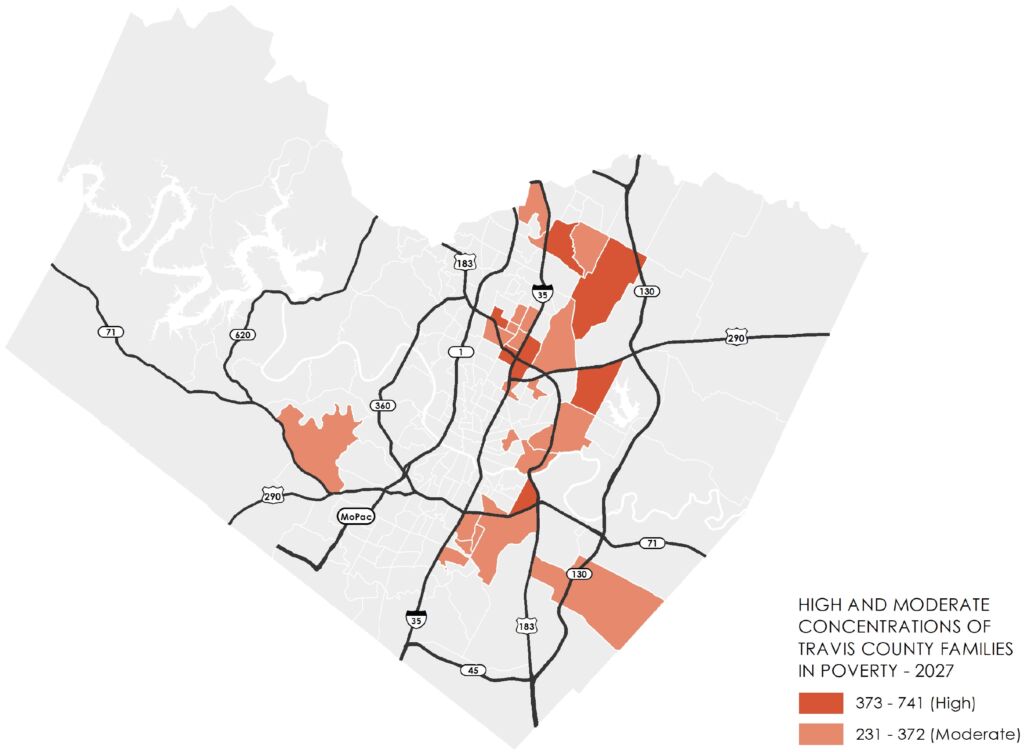2022 Demographic Report
The 2022 Report
Over the past two years the population, topography, economics and social fabric of Travis County have been in near constant flux. The onset of the global pandemic and its impact on the health care system, economy, and housing market have forced everyone to adjust to new norms. To say significant changes occurred in Travis County since Central Health published its last Demographic Report in 2020 feels like a significant understatement.
The Central Health 2022 Demographic Report is designed to provide an up-to-date snapshot of how all of these factors are impacting the population Central Health is honored to serve – the low-income residents of Travis County. Central Health published its first Demographic Report in 2015. In the intervening years the hospital district evolved through increased services and capabilities – including analytics and reporting capabilities. The impact of these expansive skill sets is seen throughout the 2022 Demographic Report.
In 2015, the report provided historical data of how the county’s total population had changed over time. The current report provides near real-time data along with five-year projections. Rather than examining changes to the entire population, Central Health’s current data gathering abilities allow for deep-dive analysis of subpopulations including the unhoused population and patients with chronic conditions. Additional elements include:
- A regional assessment of the Austin-Round Rock metropolitan statistical area (MSA), including recent trends related to housing, affordability, economic development and COVID-19;
- Provider maps detailing the Travis County locations of Central Health’s network of care including hospitals, clinics, urgent care facilities and eligibility offices;
- Geographic and demographic analysis of Central Health’s MAP, MAP Basic and sliding fee scale enrollee populations, including highlights of changes since the previous report;
- A geographic poverty analysis of Travis County and the six surrounding counties it shares a border with;
- Focus areas, which are a deep dive analysis of the nine communities in Travis County with the highest projected counts and concentrations of families in poverty, including data on poverty, enrollment, patient utilization and social determinants of health;
- An analysis of nine significant chronic conditions experienced by Central Health patients, including information on where patients reside, receive care and their demographic makeup;
- A new prevalence equity index detailing the observed prevalence rates of patient subpopulations in comparison to the overall patient rate;
- A deep dive into the demographics, care access points and burden of disease among Central Health’s patient population.
The 2022 Central Demographic Report is designed to augment and support the Health Care Equity Plan – a foundational strategic planning report adopted by the Central Health Board of Managers in February 2022. Specialty care is identified as one of the top needs for patients by the Health Care Equity Plan. To assist planning in this area, the 2022 Demographic Report provided improved analysis of chronic conditions including the calculation of the prevalence equity index to identify disparities. Additional data findings from the Demographic Report will feed into current planning of the Health Care Equity Plan.
Continuing on the work begun in 2020, the current report provides benchmarks to measure changes and improvements in care over time. This report also provides transparency as to the needs and challenges facing the low-income residents Central Health is charged with serving – including identifying where and how more work is needed. Finally, this information validates the effects of the massive investment and the trust bestowed on Central Health by Travis County residents and taxpayers to support those in community most in need.
Key Findings
The key findings of the 2022 Demographic Report are summarized below:
- High cost of living and affordability is a regional issue that impacts Travis and surrounding counties;
- Austin is the key regional access point for health care, affordable housing, public transportation and social services;
- Families in poverty are becoming more concentrated near the I-35 corridor;*
- Access to care continues to be major barrier – regardless of proximity to care;*
- Disease prevalence rates for the unhoused population are 1.5 to 2 times higher than the housed population;
- 40 percent of patients had at least one chronic condition – the overall average is 2.5 per patient;
- Health equity issues present most significantly in East Central Austin and among Black patients but demographic differences had more of an impact than geographic differences among the MAP and MAP Basic population.
The layout and design of this report is intended to make the information more accessible and reader-friendly than previous versions. The detailed census tract information and tables found in earlier iterations are now located in the appendix, along with additional maps and information.

